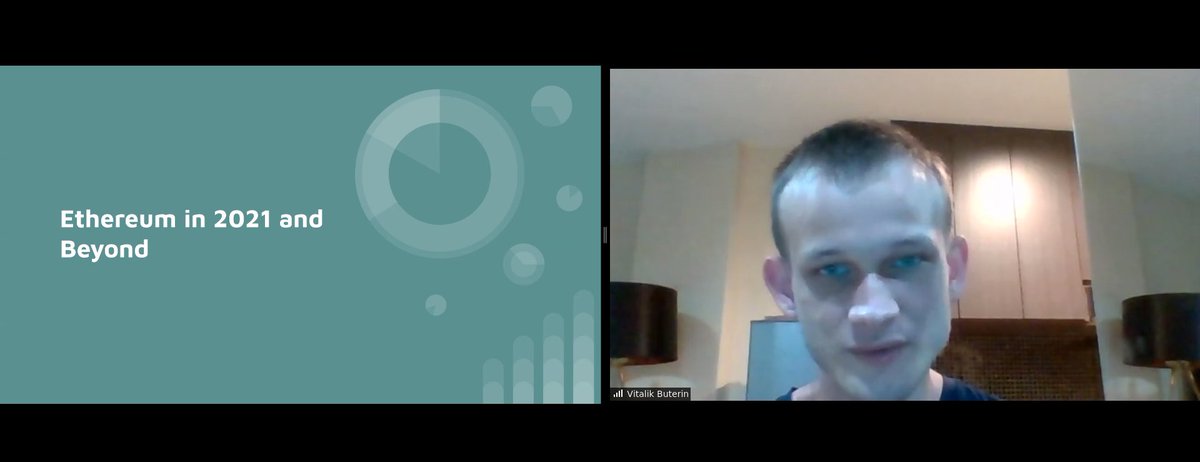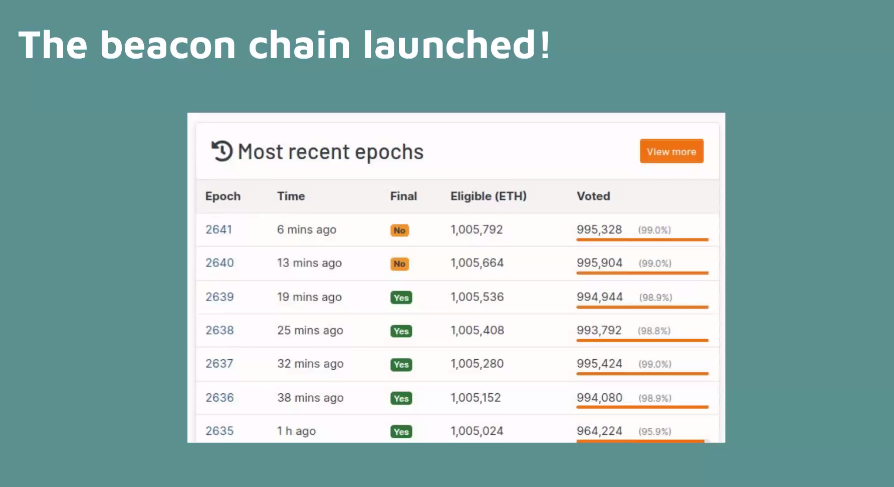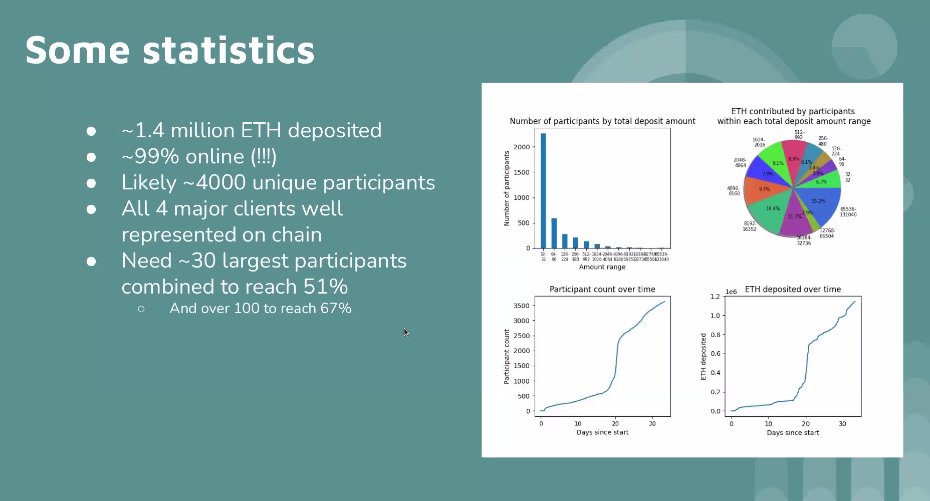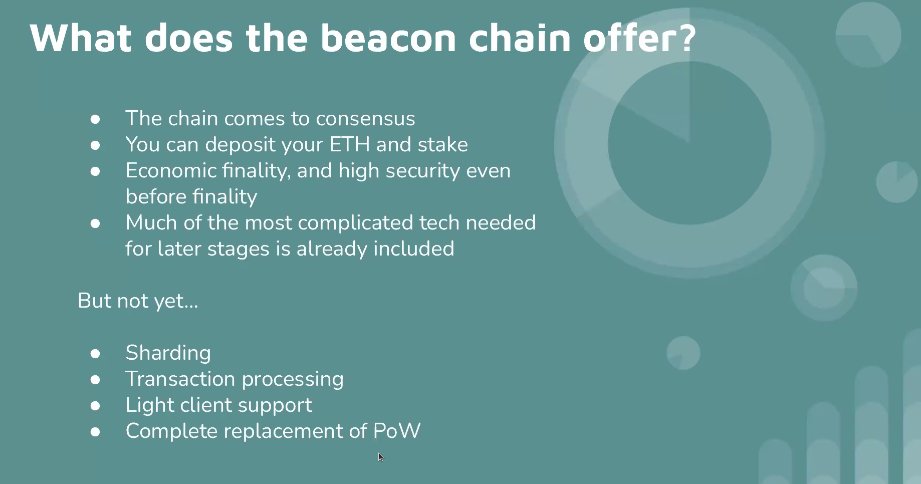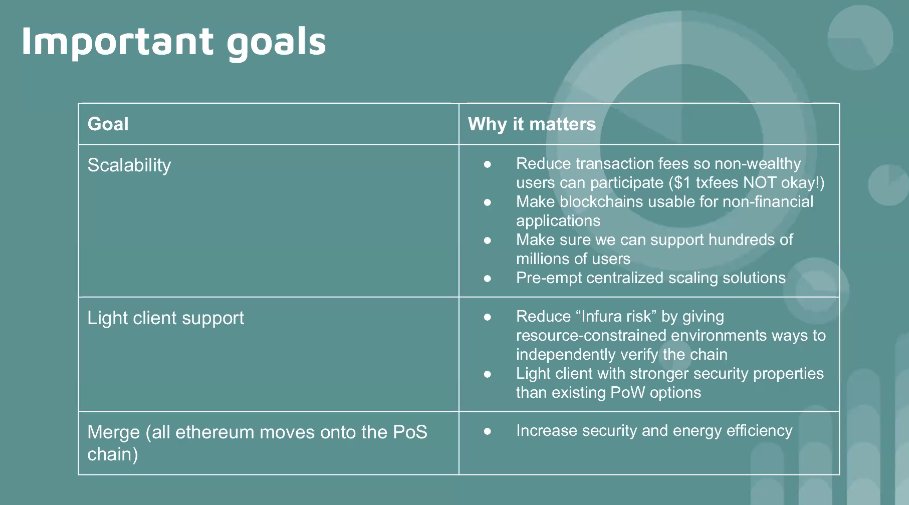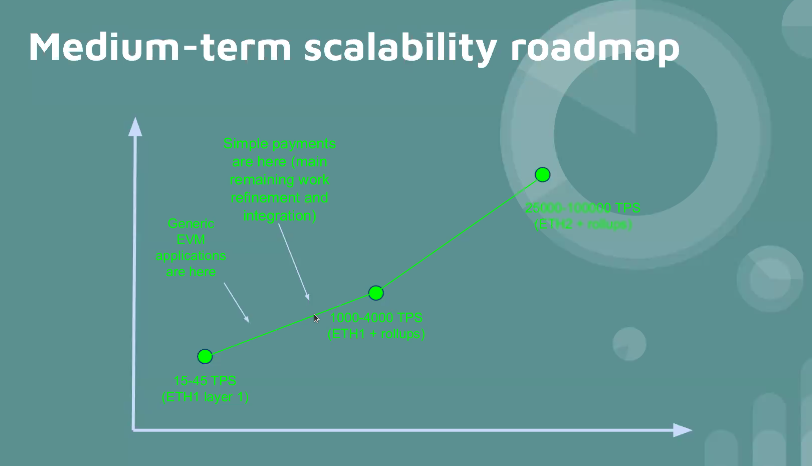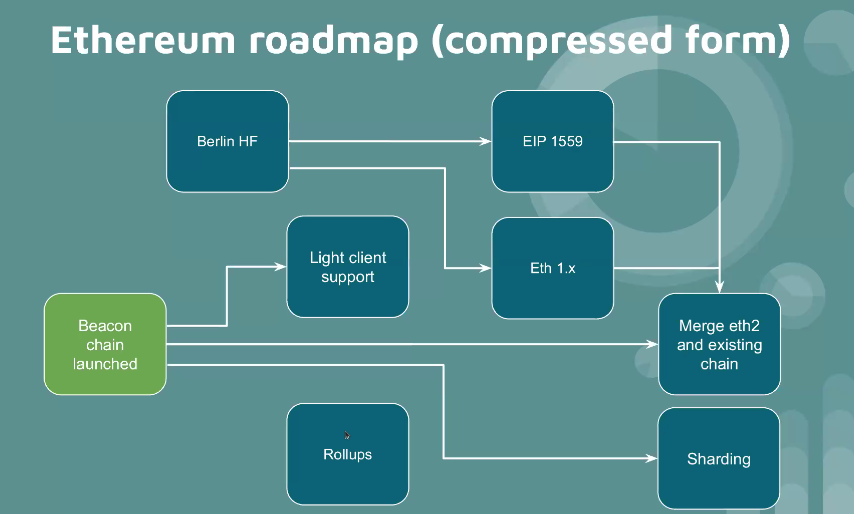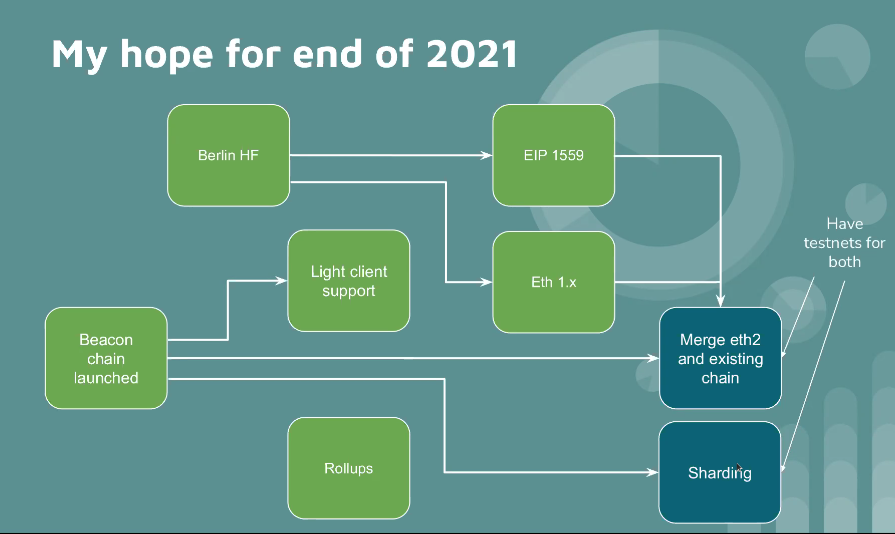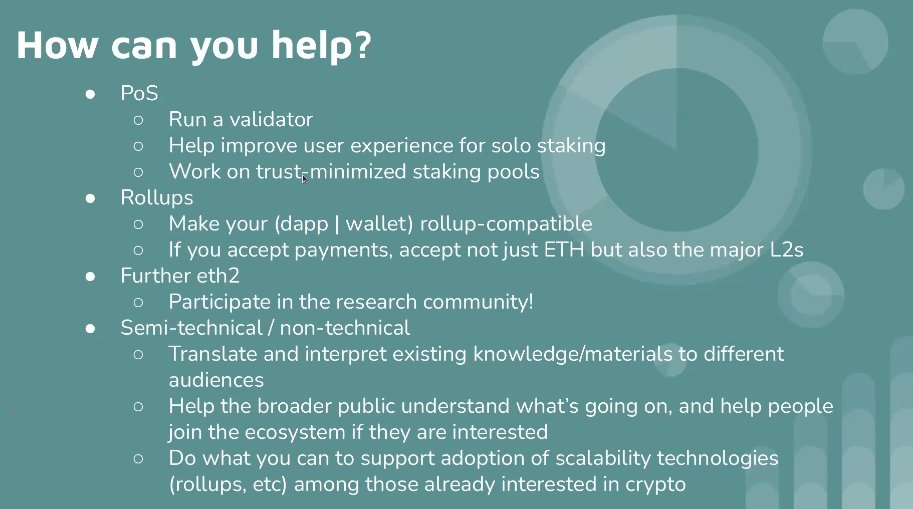First major milestone of 2020: the Eth2.0 beacon chain launched. The effort towards it goes back all the way 2014, by early research on switching from PoW to PoS.
Participation of the community on the beacon chain was even better than expected! Over 1.4 million ETH have been deposited by 4,000 unique participants.
Distribution is very decentralized as well, needing ~30 largest participants to reach a 51% majority.
Distribution is very decentralized as well, needing ~30 largest participants to reach a 51% majority.
The beacon chain is the first step in an effort to move from PoW to PoS. Shout out to @technocrypto on providing a great explanation about it! (couldn't find the thread quickly, but would appreciate if someone shares it here!)
Now, Eth2.0 is not just PoS, it also includes sharding and scalability, among other features. Even though the building blocks for them are already part of the beacon chain, sharding or tx processing are still pending!
The ecosystem was incredible in the past few years. DeFi has exploded with stablecoins, dexes, and other primitives, @ensdomains is still heavily used, NFTs are powering art and collectibles (and @poapxyz!), prediction markets were super active during elections, and more...
There's a big chance that the community will become 10 times or even 100 times bigger in the next few years. We need to be ready for that reality from a tech point of view, so scalability has been a critical goal.
It's not ok that sendng funds costs over $1, we want everyone and not just the wealthy to send txs (side note, an erc20 tx today costed about $15!).
Lowering tx fees also enables non-financial apps, and allows to support the large number of users to come.
Lowering tx fees also enables non-financial apps, and allows to support the large number of users to come.
If we don't provide decentralized scalability solutions, people will end operating in centralized exchanges, and we'll end up back to where we were before.
Next goal is light clients. Today most of Ethereum relies on centralized third party providers like @infura_io, which although are doing a great job, are not decentralized.
Light clients will be able to verify individual claims from resource-constrained envs, like mobile phones.
Light clients will be able to verify individual claims from resource-constrained envs, like mobile phones.
Last but not least, the merge! Moving everything from PoW onto PoS provides better security and energy efficiency.
The medium-term scalability roadmap starts with rollups in ETH1. We already have general rollups as well as simple payment rollups, which work on the current network.
There's still a lot of work to do: building light client support and putting more effort on rollups, as well as building sharding in Eth2.0.
In Eth1, next step is rolling out EIP1559 for simplifying and lowering gas pricing.
Last step, the merge!
In Eth1, next step is rolling out EIP1559 for simplifying and lowering gas pricing.
Last step, the merge!
Upon the merge, for app developers everything will look the same, but their apps will run on PoS instead of PoW.
Here's the wishlist for 2021, with better economics in Eth1, better rollups, and light clients for Eth2. Part of the Eth2 work could also be repurposed for Eth1!
Here's the wishlist for 2021, with better economics in Eth1, better rollups, and light clients for Eth2. Part of the Eth2 work could also be repurposed for Eth1!
If you're interested, the full roadmap is shared by Vitalik here: https://twitter.com/VitalikButerin/status/1333922620857745408
How can you help in this? You can participate in the beacon chain by running a validator or working in staking pools.
If you're a dev, consider integrating rollups like @loopringorg and @zksync!
If you're a dev, consider integrating rollups like @loopringorg and @zksync!
Last but not least, spread the word and help people understand what's going in rollups and scaling!
Scaling is already necessary today, but will be even more needed in the near future when more users start joining the ecosystem.
Scaling is already necessary today, but will be even more needed in the near future when more users start joining the ecosystem.
Q: What happens with Eth1 on the merge?
After the merge, PoW is going away for good. Ethereum apps will become part of the PoS chain. The ethereum state (account balances, and smart contract code and storage) are moved all at once from one chain to another.
After the merge, PoW is going away for good. Ethereum apps will become part of the PoS chain. The ethereum state (account balances, and smart contract code and storage) are moved all at once from one chain to another.
Q: Efforts on EIP1559 and account abstraction.
We hope they will be available on Eth1 before the merge, with some minor exceptions, and carried on to Eth2.0. EIP1559 should be ready early next year, account abstraction may take a bit longer.
We hope they will be available on Eth1 before the merge, with some minor exceptions, and carried on to Eth2.0. EIP1559 should be ready early next year, account abstraction may take a bit longer.
Q: Polynomial commitments and CBC casper
Polynomials are a powerful math construct that can hold a huge amount of info, allowing to define relations between them via polynomial equations. Polynomial commitments can be thought as a hash of a polynomial, but still let you do math.
Polynomials are a powerful math construct that can hold a huge amount of info, allowing to define relations between them via polynomial equations. Polynomial commitments can be thought as a hash of a polynomial, but still let you do math.
zkSNARKs and zero-knowledge proofs have been doing huge progress in the last years. Soon it will be possible to make general proofs of EVM computation.
CBC Casper is simpler, and thus more secure, than FFG. It also does not have the hard 2/3 threshold, and generally performs better when a large portion of participants are offline.
There are currently 234 participants logged in to the @EthereumBA zoom call - way to wrap up the year!!

 Read on Twitter
Read on Twitter